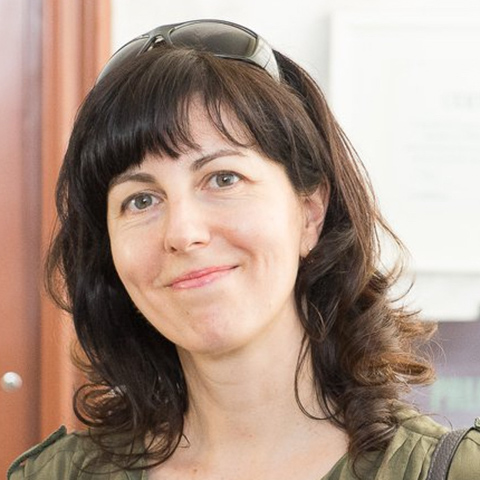
Architect and associate profesor at the Faculty of Architecture and Urban Planning of the Technical University in Cluj-Napoca, where she teaches the history of architecture, the history of art and architecture design. She is founding member of the research group INVENTARIUM. She was an MA student at Raymond Lemaire International Centre for Conservation (KU Leuven, 2003) and holds a PhD in architecture (KU Leuven, 2009) on the theme of railway history and landscape.
She worked as a consultant in conservation and urban rehabilitation for the Council of Europe (2002, 2003, 2005) and collaborated with the architectural and restoration practice Barbara Van der Wee in Brussels (2002-2004).
She is member of ICOMOS, DOCOMOMO and IRHA (International Railway History Association). She contributed to the research programme „The Role of the Railway Network in the Territorial Integration of Europe, 1850–2017,” supervised by J. Martí-Henneberg, University of Lleida (2017-2019). She is interested in the shared territories of art and architecture, with a particular concern for the architectural history of industrialization examined through multi-scale readings of the railway space.
She was visiting associate professor at the seminars organized by the Society of Architectural Historians Great Britain, „Shall my valley be green again? Encounters with the post-industrial landscape” (2021). Recent publications: „A Taste for Modernity. An Architectural Semiotics of pre-WWI Railway Station Restaurants” (with Virgil Pop, 2022); „A Tale of Two Lines: “The Transylvanian” and „The Imperial”: Mapping Territorial Integration through Railway Architecture (Social Science History, 2021); „Appropriations: Competing Modernisms in Transylvanian Railway Architecture, 1930s - 1940s” (with Virgil Pop, sITA, 2019); „Photography, Railways and Landscape in Transylvania […]” (Leuven University Press, 2019); „A Fabulous Painting in which I Would Live - Paul Delvaux’s Pictorial Poetic of the Railway Periphery between Art and Urban History” (sITA, 2016).